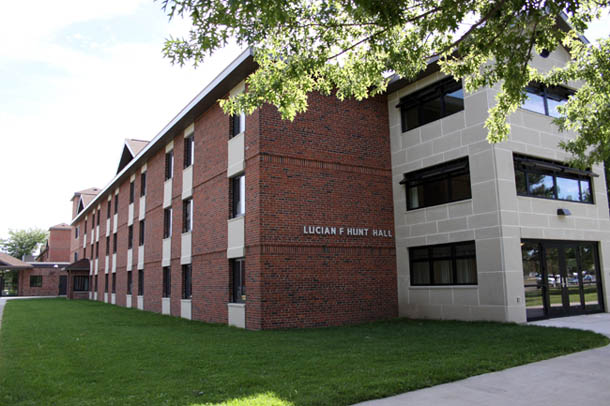NMU has now received its third certification in Leadership in Energy and Environmental Design (LEED) with the recent silver certification of Hunt Hall.
Hunt Hall has now been added onto the list of new renovated dorm halls that meet the LEED certification codes. The new certification became final in July 2010. Hunt Hall received a silver level, which falls second in a list of four possible levels: certified, silver, gold, and platinum level. Levels of certification are based off of five categories: sustainable sites, water efficiency, energy and atmosphere, materials and resources, and indoor environmental quality. Previous dorm halls to be renovated include Meyland Hall, with a certified level and Van Antwerp Hall, which also holds a silver level.
Carl Holm, the director of housing and residence life, said that achieving LEED certifications on new projects is a priority.
“One of the goals stated in the President’s Roadmap to 2015 is for NMU to be a model community for sustainable education and practices,” said Holm. “One of the priorities stated for that goal was to seek LEED certification on all capital projects.”

The Housing and Residence Life Office headed the building project, with help from the University’s Engineering and Planning Department, local architectural firm Integrated Design, local contractors Closner Constructing and Dresseler Mechanical, and S&T Electrical. The project cost the school about $8,000,000.
NMU also used more environmentally friendly construction methods during the renovations. About 180 tons of metal that were removed from the dorms was recycled and 30 percent of the materials used were shipped in from within 500 miles of campus in order to reduce the fuel required for shipping. Eighty-seven percent of the materials on the old buildings were reused to make the new buildings and 24 percent of materials were made from recycled material.
Some of the new features in Hunt Hall include a multi valve handle on the toilet and valves on the shower heads, both of which reduce water usage. The new toilet handles move both ways–– pushing the handle up results in only a half gallon of water being used, while pushing down results in a gallon and half.
According to Grant Langdon, the resident director of Hunt Hall, this alone reduces water usage by 38 percent compared to traditional toilets. Other elements include more windows to let in more natural light, high efficiency light fixtures that use lower wattage, and high efficiency washers.
Langdon said that being environmentally conscious is an important goal.
“I graduated from Northern with a degree in Outdoor Recreation Leadership and Management,” said Langdon. “I spent a lot of time outdoors and a lot of class time learning about ecology and what our goal is and how it effects the environment around us in things we don’t even notice.”
Some of these new changes still take time to adjust to. Martha Webster, a freshman English major living in Hunt Hall, is still adjusting to some of the new changes. She says sometimes she forgets what way to flush the toilet. Still, Webster enjoys the new changes.
“Having these updates makes me feel a lot better about they way I use energy and water in my daily life. Forcing us to be more energy and water efficient sets a good habit we can take with us after we leave a few years from now,” Webster said.























